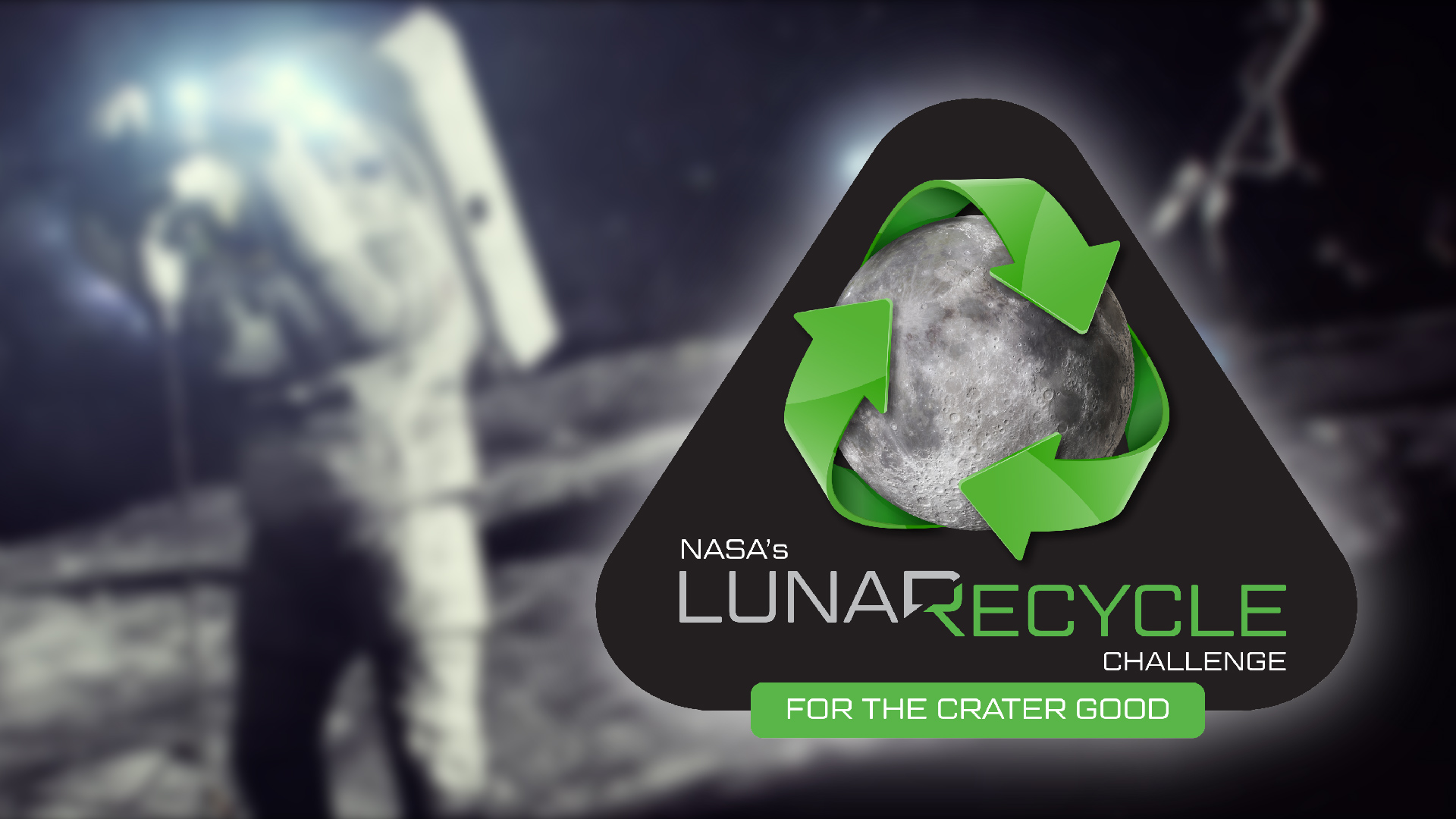
(Image courtesy of NASA)
LunaRecycle, a NASA Centennial Challenge, launched in September 2024 to crowdsource solutions for recycling non-metabolic materials on space exploration missions. The competition focuses on the design, development and demonstration of solutions that can reduce trash accumulation on longer-term missions to the moon, Mars and beyond.
The University of Alabama is the allied organization for NASA’s LunaRecycle Challenge, partnering with the space agency to support the planning and execution of the competition through outreach, coordination and academic engagement.
Dr. Rajiv Doreswamy, director of space technologies and engineering research at The University of Alabama College of Engineering, said, “This partnership allows the College of Engineering to showcase our capabilities, faculty and students to a worldwide audience. Playing an integral role in managing NASA’s Centennial Challenge with the highest number of participants to date not only highlights our strengths but also deepens our connection with NASA and industry experts.”
Doreswamy added, “We’ve proven UA’s ability to manage a complex project with demanding deadlines, and we’re now building formal partnerships in space research and materials recycling. These efforts expand opportunities for our faculty and provide critical training for the next generation of engineers.”
The challenge offers a $3 million prize purse that will be awarded across two phases of competition. In Phase 1, teams submitted design concepts for two different tracks – prototypes and digital twins – that demonstrate how recyclables can become multiuse or repurposed as tools when there is limited reliance on resupply or waste disposal operations. Teams were able to submit to either or both tracks.
Six waste streams were identified to represent the most frequently discarded items astronauts encounter while in space:
- Fabrics
- Food packaging
- Structural elements for temporary structures
- Foam packaging
- Extravehicular Activities (EVA) waste
- Other packaging and gloves
Repurposing or reusing these items not only makes for a cleaner, more effective mission but also creates new avenues of efficiency and ingenuity for NASA’s most daring space explorers.
Space waste is often generated through two avenues: transportation and daily crew use. For example, structural elements, foam packaging and EVA waste may be a byproduct of a container’s structure or packaging for ensuring science experiment tools or samples don’t break during transport. In addition, astronauts’ food packaging, clothing, gloves and washcloths become single-use tools if not repurposed or recycled.
More than 1,200 teams from 45 U.S. states and 86 countries registered for Phase 1 of the challenge – the most any single Centennial Challenge has received in its 20-year history. The winning teams designed solutions to manage these waste streams, whether through finding new uses for the items or remolding them into different tools, feedstocks or supplies.
The U.S. teams each earned a $75,000 and $50,000 prize for their success in the prototype build and digital twin tracks, respectively. While international participants are not eligible to receive monetary prizes from NASA, four teams’ solutions earned recognition from the agency as winners.
The Phase 1 winners in the Digital Twin track are:
- Acme Space (Sheridan, Wyo.)
- Cislune (Rosemead, Calif.)
- Gensler Advanced Concepts (Austin, Texas)
- PRIME (Houston, Texas)
- Terasynth (Orlando, Fla.)
- Esperanza (Tarragona, Spain)
The Phase 1 winners in the Prototype Build track are:
- Acme Space (Sheridan, Wyo.)
- CERBERUZ (Cambridge, Mass.)
- Cislune (Rosemead, Calif.)
- Lunar Nanomand (Corvallis, OR)
- Moon Made (Boulder, CO)
- Phoenix Loom (Fishkill, N.Y.)
- Plastronauts (Newark, N.J.)
- SelenoCycle Innovations (San Diego, Calif.)
- NBRaINS (Buenos Aires, Argentina)
- DOPS go’s Lunar (Alkmaar, Netherlands)
- Waste Parrot (Edmonton, Canada)
Jennifer Edmunson, acting program manager for NASA Centennial Challenges, said, “It’s been a pleasure having The University of Alabama on a NASA Centennial Challenge. We’ve enjoyed collaborating with Dr. Doreswamy and his team during this successful Phase 1, and we are very excited to see how our partnership strengthens as we embark on Phase 2 soon.”
Phase 2 of the challenge is slated to open soon nasa.gov/lunarecycle.
Watch the video announcement of LunaRecycle Challenge Phase 1 winners.